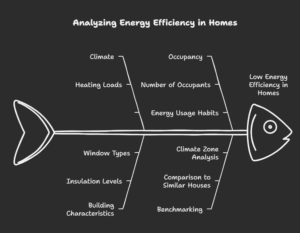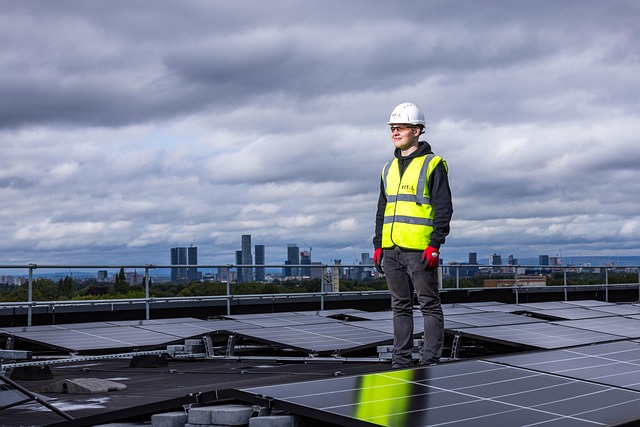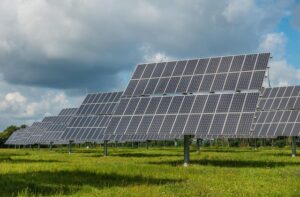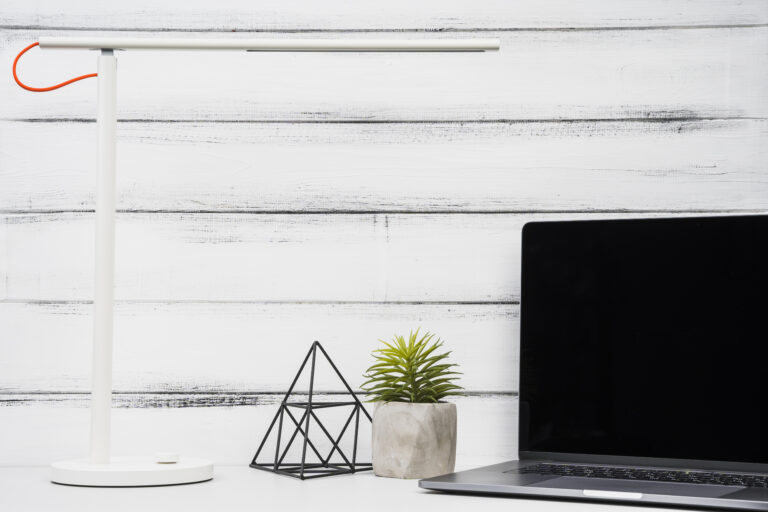How to calculate energy efficiency ratio of a house
As an energy efficiency consultant, I’ve helped dozens of homeowners understand where their energy dollars go and how to get more value from every watt.
One of the most practical ways to measure home performance is by calculating its Energy Efficiency Ratio (EER).
Whether you’re planning upgrades, buying a new home, or just trying to cut utility costs, knowing your EER gives you a clear picture of how well your home converts energy into comfort.
In this guide, I’ll walk you through the basics of calculating EER so you can make smarter, more sustainable decisions.
Energy efficiency building materials
Energy efficient building materials are materials that help reduce energy consumption in a building by improving insulation, minimizing heat loss, and enhancing overall energy performance.
These materials keep your home cooler in summer and warmer in winter, cutting down on the need for heating and cooling systems, which helps save on energy bills.
Some common examples include:
- Insulated windows: Reduce heat transfer and keep your home comfortable.
- Cool roofing: Reflects more sunlight, reducing the need for air conditioning.
- High-performance insulation: Keeps temperature stable inside, reducing energy loss.
- Energy-efficient concrete and bricks: Improve thermal mass, helping to regulate indoor temperatures.
- Sustainable materials like bamboo and recycled wood: Not only energy-efficient but also eco-friendly.
Using these materials in construction helps reduce your carbon footprint, lowers utility costs, and contributes to a more sustainable environment.
What is EER?
EER stands for Energy Efficiency Ratio, and it’s a measure of how efficiently an air conditioner uses energy to cool your space.
Essentially, it tells you how much cooling you get for each watt of energy the unit uses. The higher the EER, the more efficient the air conditioner is, which means it uses less energy to cool your home.
Think of it this way: a high EER means your air conditioner will cool your space more effectively while using less electricity.
A low EER? Well, it means the unit needs more energy to do the same job.
How Is EER Calculated?
To calculate the EER, we divide the cooling capacity (measured in BTUs) by the watts of power it uses.
For example:
- A unit with 10,000 BTU and using 950 watts of power would have an EER of:
10,000 BTU ÷ 950 watts = 10.53 EER
The higher the number, the better! So, in this case, 10.53 is a solid EER score, meaning it’s a relatively efficient unit.
EER vs. SEER: What’s the Difference?
If you’re shopping for a central air system or window unit, you might also come across SEER, which stands for Seasonal Energy Efficiency Ratio.
While EER tells you how efficient the unit is at one moment, SEER takes into account an entire cooling season, considering temperature and other variables throughout the year.
So SEER is often used for central AC units, while EER is more common for window or portable units.
Choosing the Right Air Conditioner Based on EER
Now that you know what EER means, you’re probably wondering: how does it help you pick the right air conditioner?
Here’s the deal: Air conditioners with higher EER ratings are typically more energy-efficient, but they may cost a little more upfront.
However, over time, the money you save on energy bills can make up for that initial cost. It’s an investment that pays off in the long run!
Let’s say you’re comparing two 10,000 BTU air conditioners:
- One has an EER of 8.5 and uses 1,200 watts of power.
- The other has an EER of 10.2 and uses 1,000 watts of power.
While the second unit might cost a bit more initially, it’ll use less energy to run, meaning lower electricity bills. The more efficient model could save you money over time.

How Does SEER Affect Your Energy Use?
To really drive home the importance of efficiency, let’s take an example with SEER. If you have a 5,000 BTU unit with a SEER of 10, and it runs for about 1,170 hours during the year, here’s how much energy it’ll use:
- Annual cooling output: 5,850,000 BTU/year
- Energy usage: 585,000 kWh/year (because SEER is calculated based on this ratio)
The more SEER your unit has, the less energy it uses to cool your space over the long term.
Tips for Saving Energy While Using Your Air Conditioner
Even with the most efficient AC, there are ways you can save even more energy and keep your bills lower:
- Set the thermostat a little higher: Each degree you raise can save you money on your energy bill, without sacrificing comfort.
- Use a ceiling fan: Fans help circulate the cool air and make your AC work more efficiently.
- Keep appliances away from the thermostat: TVs, lamps, and other electronics give off heat that could trick the thermostat into thinking the room is warmer than it is.
- Turn down the fan speed on humid days: This will help your air conditioner pull more moisture from the air, which makes the room feel cooler.

What is a good eer rating for an air conditioner
Energy efficiency building solutions
Energy-efficient building solutions focus on reducing energy use and improving sustainability. Key solutions include:
- Better insulation: Keeps temperatures stable, reducing heating and cooling costs.
- Energy-efficient windows: Minimize heat loss and gain.
- Smart lighting and HVAC: Automated systems that optimize energy use.
- Solar panels: Generate renewable energy to reduce reliance on the grid.
- Green roofs: Improve insulation and absorb rainwater.
These solutions lower energy bills, reduce environmental impact, and create more comfortable living spaces.
Why Efficiency Matters
While high-EER or SEER units may cost more upfront, their efficiency can help reduce your energy bills over time. Think of it like buying a more fuel-efficient car: the initial cost is higher, but the savings over time are worth it.

Plus, a more efficient air conditioner is better for the environment, reducing the amount of energy used and cutting down on emissions.
Which energy rating is best for AC?
The best energy rating for an air conditioner is typically SEER (Seasonal Energy Efficiency Ratio) for central AC systems and EER (Energy Efficiency Ratio) for room units.
Here’s a breakdown of each:
SEER (Seasonal Energy Efficiency Ratio)
- Ideal Rating: 14 or higher is considered good, while 16-18 is excellent.
- Why it’s important: SEER measures energy efficiency over an entire cooling season (summer). The higher the SEER rating, the more efficient the air conditioner is, which leads to lower electricity bills.
- For comparison: A unit with SEER 14 uses about 30% less energy than a unit with SEER 10.
EER (Energy Efficiency Ratio)
- Ideal Rating: 10 or higher is good, and 12+ is excellent.
- Why it’s important: EER measures the energy efficiency of the air conditioner at a specific moment, usually under a fixed set of conditions (95°F outside, 80°F inside). It’s more relevant for portable and window units.
- For comparison: An EER of 10 indicates the AC is efficient enough for most homes, but anything above 12 is considered very efficient.
Which Rating Should You Choose?
- For Central AC Systems: Look for SEER 16 or higher for optimal energy savings.
- For Room AC Units: Choose an EER of 10 or higher, and ideally, 12 or more for the best energy efficiency.
Energy performance gain bios
Energy performance gains refer to improvements in a building’s efficiency, reducing energy consumption while maintaining comfort.
This can include upgrading insulation, using energy-efficient windows, installing smart systems for lighting and HVAC, or integrating renewable energy sources like solar panels.
These upgrades lower energy bills, reduce carbon footprints, and increase overall sustainability.
| Energy Gain | Benefit |
| Upgraded Insulation | Cuts energy use and lowers bills. |
| Energy-efficient Windows | Reduces heat loss, lowers costs. |
| Smart Systems | Optimizes energy use, saves energy. |
| Renewable Energy | Lowers reliance on grid power. |
| Efficient Appliances | Reduces overall energy consumption. |

FAQs
1. How to calculate energy efficiency ratio (EER)?
The Energy Efficiency Ratio (EER) measures how effectively a home uses energy. The basic formula is:
EER=Useful Energy Output (e.g., heating, cooling)Total Energy Input (electricity, gas, etc.)
For homes, EER is often expressed as a percentage (%), where higher values indicate better efficiency.
2. How to calculate energy efficiency of a home?
To assess your home’s overall energy efficiency, follow these steps:
-
Step 1: Gather utility bills (electricity, gas, etc.) for a full year.
-
Step 2: Calculate total energy consumed (in kWh or BTUs).
-
Step 3: Determine the useful energy output (e.g., actual heating/cooling delivered).
-
Step 4: Use the formula:
Energy Efficiency (%)=(Useful Energy OutputTotal Energy Input)×100
-
Example: If your HVAC system delivers 8,000 kWh of heating using 10,000 kWh of electricity, its efficiency is 80%.
3. How do you calculate the energy efficiency rate?
The energy efficiency rate is similar to EER and can be calculated using:
Efficiency Rate (%)=(Desired Output (e.g., heating/cooling)Energy Consumed)×100
-
High-efficiency homes typically range from 80-95%, while older homes may fall below 60%.
4. What is the formula for calculating efficiency ratio?
The general efficiency ratio formula is:
Efficiency Ratio=OutputInput
-
For appliances (like HVAC): EER = Cooling Capacity (BTU/h) ÷ Power Input (Watts)
-
For whole-home efficiency: Annual Energy Use (kWh) ÷ Floor Area (sq. ft.) = kWh/sq. ft./year
Final Thoughts
Choosing the right air conditioner doesn’t have to be confusing. By understanding the EER and SEER ratings, you can pick a unit that will keep your home cool without burning a hole in your wallet.
Pay attention to these ratings, and you’ll not only stay comfortable but also save on your energy costs in the long run.
Happy cooling!








